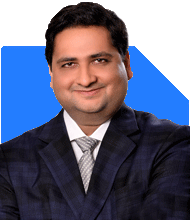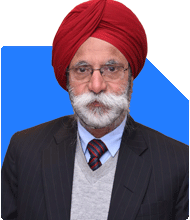I am 49 yrs and monthly expense is 165000. no other liabilities of children's and parents. Only expense of myself and wife and if want to retire in next 1 year what corpus would be needed for next 25 yrs considering inflation. we have adequate Mediclaim policy of 75 lakhs.
Ans: You are 49 now, with monthly expenses of Rs. 1.65 lakh. You have no children's or parents' liabilities. You plan to retire in one year. Also, you and your wife are well-covered by a Rs. 75 lakh Mediclaim policy.
That’s a strong and admirable starting point. Let us now assess your retirement readiness. We will consider inflation, lifestyle, and long-term wealth management.
Let us start with the key areas you must evaluate before retirement.
Monthly Expenses and Lifestyle Assessment
Your current monthly expenses are Rs. 1,65,000. That is Rs. 19.8 lakh a year.
This includes only you and your wife. That simplifies planning.
It seems your lifestyle is stable and well-managed.
As inflation rises, your expenses will rise each year.
With average inflation of 6%, costs double in 12 years.
So, your Rs. 1.65 lakh today can become about Rs. 3.3 lakh per month in 12 years.
You must plan for these higher costs in future years.
Retirement corpus should grow steadily and beat inflation.
That way, your wealth can support you for 25+ years.
Evaluating Retirement Duration
You are retiring at 50. We will plan till 75 years.
But people are living longer now. Life expectancy is increasing.
So, it is better to plan till 85 or 90 years.
That means your money must last for 35 to 40 years.
But your question is for 25 years. Let us assess for 25 first.
Later, we will share how to stretch this for longer, if needed.
How Much Corpus Is Needed?
You will need income for 300 months (25 years × 12 months).
Each year, expenses will rise due to inflation.
So, in early years you may spend less.
But in later years, your expenses will be much more.
Your corpus must grow and give monthly income.
At the same time, the principal must not fall quickly.
A safe starting estimate: You will need around Rs. 8 to 10 crores.
This is to cover 25 years with rising expenses.
This estimate assumes post-retirement returns of 10% to 11%.
It also assumes inflation at 6% per year.
The more return your investments earn, the less corpus you need.
The less return, the more corpus you need.
Corpus must be invested smartly to earn and grow.
We will now see how to manage this corpus efficiently.
Key Factors That Affect Your Retirement Plan
Inflation: Your biggest hidden enemy. It silently eats wealth.
Longevity: If you live longer, you need more money.
Medical Expenses: You have good Mediclaim cover. That is great.
Unexpected Costs: Home repair, travel, or emergencies may arise.
Return on Investments: You must beat inflation every year.
Tax Efficiency: Returns must be tax-optimized.
Withdrawal Plan: Monthly withdrawal must be well structured.
Ideal Investment Strategy for Retirement
Your goal is simple: monthly income of Rs. 1.65 lakh, rising with inflation.
At the same time, principal must stay intact or reduce slowly.
Here is the strategy:
Invest the full retirement corpus in mutual funds.
Choose a mix of equity and hybrid funds.
Start with a 60:40 ratio. 60% equity, 40% debt/hybrid.
This gives growth and stability.
Every year, rebalance the portfolio.
If equity grows fast, shift some to hybrid for safety.
Use Systematic Withdrawal Plan (SWP) for monthly income.
Withdraw only what you need. Let the rest grow.
Avoid fixed deposits for full corpus. They do not beat inflation.
Keep only 6 to 9 months of expenses in FDs or liquid funds.
That acts as an emergency buffer.
You should invest through a Certified Financial Planner.
A CFP will help you create a strong plan.
They can also handle taxes, rebalancing, and fund review.
Why You Should Avoid Index Funds
Index funds follow the market blindly.
They invest in every stock, good or bad.
No fund manager takes active decisions.
During market fall, they fall fully.
They cannot protect your money in crisis.
They do not outperform consistently.
In retirement, you cannot afford sudden deep losses.
You need actively managed funds.
These funds are managed by experts.
They aim to protect during fall and grow during rise.
That is safer for long-term retired life.
Why You Should Avoid Annuities
Annuities give fixed income for life.
But they are not inflation protected.
If you get Rs. 1 lakh today, it stays Rs. 1 lakh forever.
After 10 years, that has much less value.
They also offer very low returns.
Most annuities lock your money permanently.
There is little flexibility and no liquidity.
You cannot exit midway if your needs change.
That is not ideal for someone in your situation.
You need a growing income, not fixed.
SWP from mutual funds is better than annuities.
Why You Should Avoid Real Estate
Real estate needs large one-time investment.
It has poor liquidity. You cannot sell fast.
Maintenance cost is high.
Rental income is often low and irregular.
Property disputes are common.
In retirement, you need easy-to-manage assets.
Real estate is not ideal for retirees.
Tax Planning for Retirement
SWP from equity mutual funds is taxed.
Long-term capital gains (LTCG) above Rs. 1.25 lakh yearly are taxed at 12.5%.
Short-term capital gains are taxed at 20%.
Debt fund withdrawals are taxed as per your tax slab.
With right planning, you can reduce tax.
You can stagger withdrawals to stay under limit.
Keep long-term view for most equity funds.
Let them grow for at least 3 to 5 years before major withdrawals.
A Certified Financial Planner will guide your tax planning.
Annual Review of Retirement Plan
Every year, review your expenses.
Match your SWP amount with your needs.
If inflation rises faster, adjust SWP upward.
Rebalance portfolio to maintain equity and debt mix.
Track returns of each fund regularly.
Remove underperformers after 2-3 years.
Add new funds with good consistency.
Review Mediclaim and emergency fund each year.
Make a will or estate plan.
Ensure all documents are updated and in order.
Other Key Tips for Retired Life
Don’t give large loans to friends or relatives.
Avoid co-signing loans for anyone.
Keep your lifestyle simple and meaningful.
Spend more on health and wellness.
Invest time in hobbies and charity.
Keep your money safe from online fraud.
Don’t chase high return risky investments.
Always discuss big financial decisions with your wife.
If needed, involve your Certified Financial Planner for support.
What If You Live Beyond 25 Years?
Your current plan is for 25 years.
But you may live till 85 or 90.
So your corpus must grow even after withdrawals.
Let at least 40% of your corpus stay in equity.
Equity gives long-term inflation beating returns.
If your corpus allows, reduce SWP amount after 75.
Or maintain same SWP, but reduce expenses.
This will help your corpus last longer.
Review the corpus regularly post 75 years of age.
Final Insights
You are well prepared for retirement at 50.
Rs. 1.65 lakh monthly expenses are realistic.
But inflation must be planned seriously.
You will need about Rs. 8 to 10 crore corpus.
Invest in equity and hybrid mutual funds.
Use SWP for monthly income.
Avoid index funds, annuities, and real estate.
Keep liquidity for emergencies.
Review portfolio and expenses yearly.
Involve a Certified Financial Planner for full planning support.
Your focus now should be wealth preservation and moderate growth.
This is a golden phase of life. Plan it smartly.
You deserve peace, dignity, and freedom in retirement.
Best Regards,
K. Ramalingam, MBA, CFP,
Chief Financial Planner,
www.holisticinvestment.in
https://www.youtube.com/@HolisticInvestment















.jpg)






